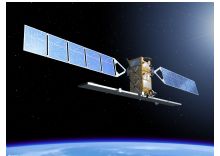ESA is developing a new family of missions called Sentinels specifically for the operational needs of the Copernicus programme.
Each Sentinel mission is based on a constellation of two satellites to fulfil revisit and coverage requirements, providing robust datasets for Copernicus Services.
These missions carry a range of technologies, such as radar and multi-spectral imaging instruments for land, ocean and atmospheric monitoring:
Sentinel-1 is a polar-orbiting, all-weather, day-and-night radar imaging mission for land and ocean services. The first Sentinel-1 satellite was launched on a Soyuz rocket from Europe′s Spaceport in French Guiana on 3 April 2014.
Sentinel-2 is a polar-orbiting, multispectral high-resolution imaging mission for land monitoring to provide, for example, imagery of vegetation, soil and water cover, inland waterways and coastal areas. Sentinel-2 can also deliver information for emergency services.
Sentinel-3 is a multi-instrument mission to measure sea-surface topography, sea- and land-surface temperature, ocean colour and land colour with high-end accuracy and reliability. The mission will support ocean forecasting systems, as well as environmental and climate monitoring.
Sentinel-4 is a payload devoted to atmospheric monitoring that will be embarked upon a Meteosat Third Generation-Sounder (MTG-S) satellite in geostationary orbit.
Sentinel-5 is a payload that will monitor the atmosphere from polar orbit aboard a MetOp Second Generation satellite.
Sentinel-5 Precursor satellite mission is being developed to reduce data gaps between Envisat, in particular the Sciamachy instrument, and the launch of Sentinel-5. This mission will be dedicated to atmospheric monitoring.
Sentinel-6 carries a radar altimeter to measure global sea-surface height, primarily for operational oceanography and for climate studies.
For more information: https://sentinel.esa.int/web/sentinel/home
Visit ESA Online for Technical Informations:
https://sentinel.esa.int/web/sentinel/sentinel-technical-guides
